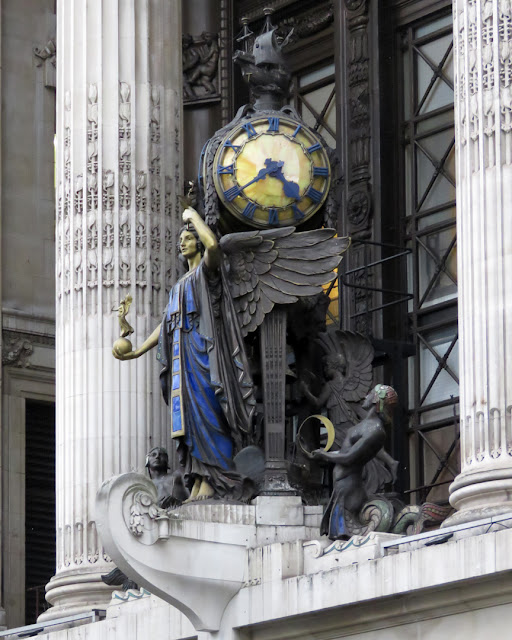Friday, June 29, 2018
The Queen of Time
The Queen of Time by Gilbert Bayes
Selfridges
Oxford Street
London, September 2016
“In the days before mobile phones it was common practice to arrange a rendezvous beneath some well-known clock and in October 1931 Selfridges unveiled what one writer called ‘London’s newest meeting place’. Other commentators hailed it as ‘one of the sights of London’ and a ‘horological masterpiece’. Nowadays most Oxford Street shoppers barely notice it. Several reputable websites claim the clock was created as early as 1908 but even the first (the eastern) part of the building wasn’t completed until 1909 and at that time Harry Gordon Selfridge envisaged an entirely different central feature, with a large dome crowning the storefront. The western and (ultimately domeless) central sections both had to wait until after the First World War, opening in 1920 and 1926 respectively, by which time the architect Albert D Millar had conceived the idea of a clock and sculpture grouping. The statue of the Queen of Time standing on the prow of the Ship of Commerce and attended by nymphs was the work of Gilbert Bayes, a leading exponent of the New Sculpture movement, which influenced Alfred Gilbert’s statue of Eros in Piccadilly Circus. Bayes at first planned to create his 11-foot-tall queen in terracotta but he eventually chose to use bronze, decorated with gilding, blue faience and Doulton stoneware.” (The Queen of Time, Hidden London)
Subscribe to:
Post Comments (Atom)


No comments:
Post a Comment